Computex 2013We continue a series of publications about the most large-scale technological exhibitions that have influenced the development of the IT industry.
In less than a month, from June 5 to 9, an international computer exhibition, Computex, will be held in Taipei. In 2018, she will be 38 years old. During this time, the event faced a crisis in the PC market, changed its concept and won the second place among similar exhibitions in the degree of "IT". Companies use the exhibition to present their latest developments. Intel, AMD, Asus, Microsoft, Tesla - only a small part of the leading corporations whose products can be found on Computex Taipei.
How the exhibition could turn from an unknown event into one of the large-scale events in the IT world, we tell further.
How it all began
The first Computex exhibition took place in 1981 in the airport of Songshan airport. The organizer was the Taiwan Foreign Trade Development Council (TAITRA), a government agency, and then a company, organized in 1970 to help Taiwan foreign trade.
Initially, the exhibition was called “Computer Show” and was positioned as a place where small and medium-sized enterprises of the emerging computer industry in Taiwan could demonstrate their achievements. In the early 1980s, Taiwanese TV companies began producing computer terminals, microcomputers, and printers.
In 1984, the exhibition received its current name - Computex Taipei, and in 1986 finally moved to the newly built TWTC exhibition hall.
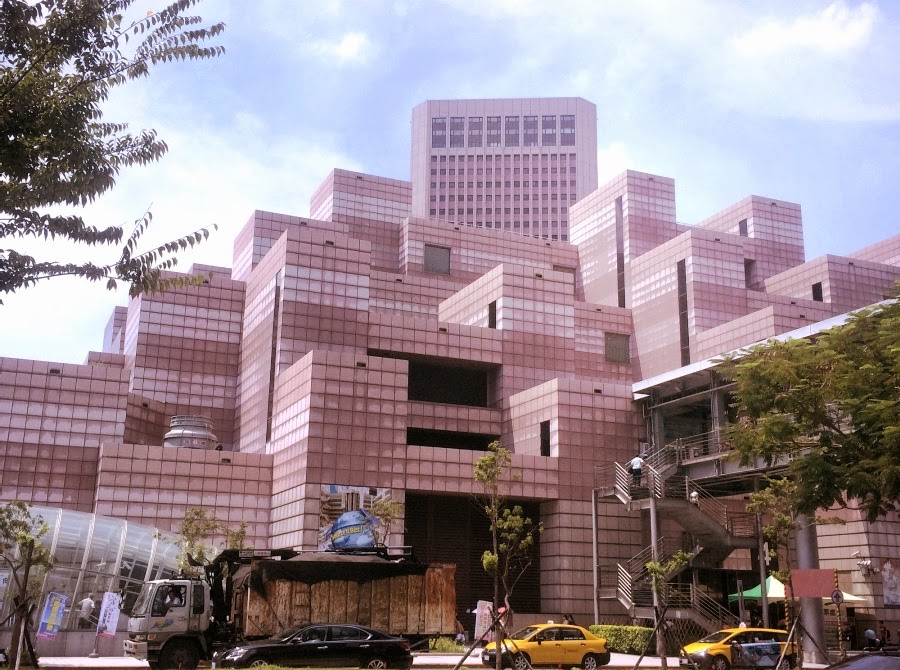 Building Taipei World Trade Center (TWTC)
Building Taipei World Trade Center (TWTC)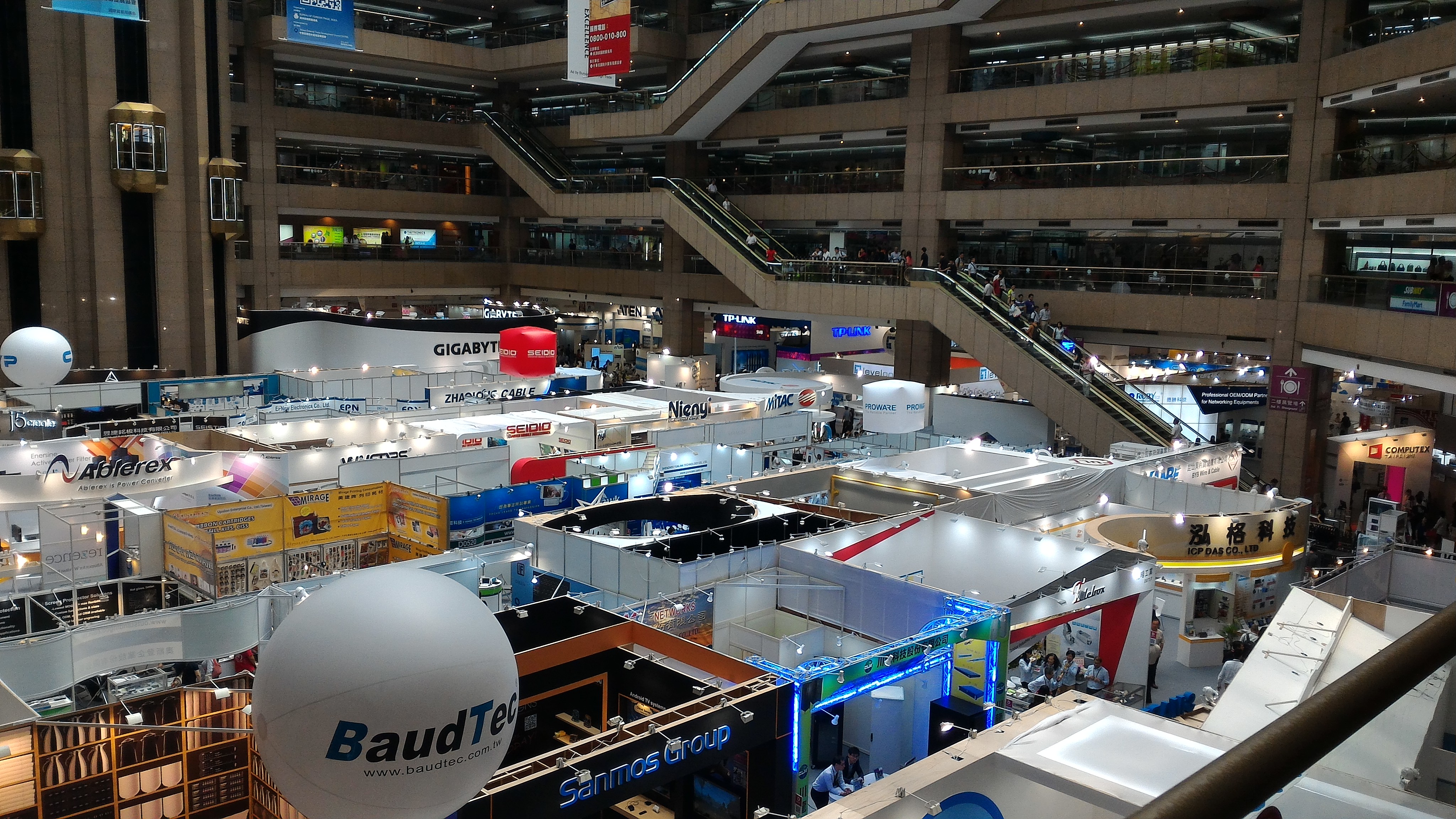 Inside TWTC. Computex 2015
Inside TWTC. Computex 2015In 1989, Computex became the world's third largest show in the IT industry. Due to the scale of the fair, there were problems with the lack of exhibition space. Especially for Computex opened the exhibition area in the airport of Songshan airport. But even despite the appearance of additional space, some large companies were able to allocate only one stand to showcase their products.
The following year, the organizers divided the exhibition for foreign and national companies. At the same time, foreign representatives were allocated much less space for exposition than compatriots. The largest exhibits were shown on the street.
Period of success
The opening of new exhibition venues and the growth in the number of exhibitors have prompted large international companies, such as Intel, Texas Instruments, ASUS, Acer, to join Computex. The exhibition began to expand rapidly and turned into a landmark arena for the IT industry.
In 1996, the Taipei Computer Association (Tirei Computer Association) was created, which was supposed to popularize the exhibition and expand its influence among technology companies.
In 2002, the organizers decided to award the most interesting and promising, in their opinion, the development of the prize "Best Choice." Over the entire existence of Computex, Taiwanese companies have become mainly laureates. Often deservedly, but sometimes the commission simply
ignores developers from other countries.
In 2003, the exhibition was under threat due to the atypical pneumonia epidemic in Asia. Companies, sponsors and media have agreed to postpone Computex until September - to the completion of construction work in the A21 exhibition hall (3rd exhibition hall of the Taipei World Trade Fair). At the same time there were rumors about the problems of the main competitor of Computex - the international exhibition of information and telecommunication technologies CeBIT Asia.
The appearance of additional space and talk about the decline of CeBIT contributed to the fact that in 2004 the number of participants and visitors to Computex Taipei increased dramatically (1,347 and 11,805 people, respectively), and the area grew to 58,730 square meters. Since then, the tradition of the simultaneous opening of all exhibition areas, which operated in the World Exhibition Hall and the International Conference Center Taipei, has appeared. Computex Taipei has become the second largest computer and technology fair in the world after CeBIT.
As at CES, at the Asian exhibition Computex can be found models. However, since Taiwan is a rather exuberantly purist country, the measures of the permitted are strictly regulated. A short skirt and mid-neckline are all that are allowed. The tradition to attract models to the exhibition appeared relatively recently. Back in the early 2000s, they were rare.
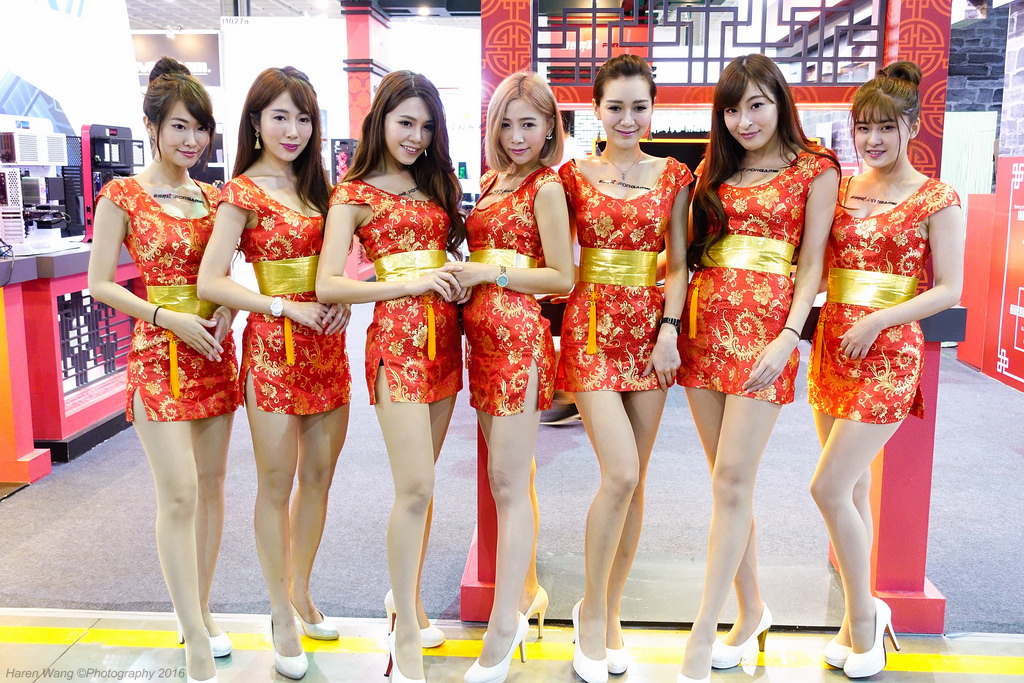 Computex 2016
Computex 2016In 2008, the third and last exhibition hall was opened - TWTC Nangang. All three TWTC halls are located close to each other, but small comfortable buses, equipped with air conditioning, run between them. In addition to traditional halls, the stands were located at the Grand Hyatt Taipei. About 100 companies, including well-known manufacturers, turned five-star apartments into an exhibition space, renting them for only $ 200 a day.
In 2012, the scale of the exhibition set a new record - 1,800 exhibitors and 5,400 booths took part in Computex Taipei.
The tone for Computex was still set by major Taiwanese vendors, such as Asus, Acer, Gigabyte. Global corporations, as a rule, being their partners - Intel, AMD, Microsoft, Qualcomm and others continue to take part in the exhibition.
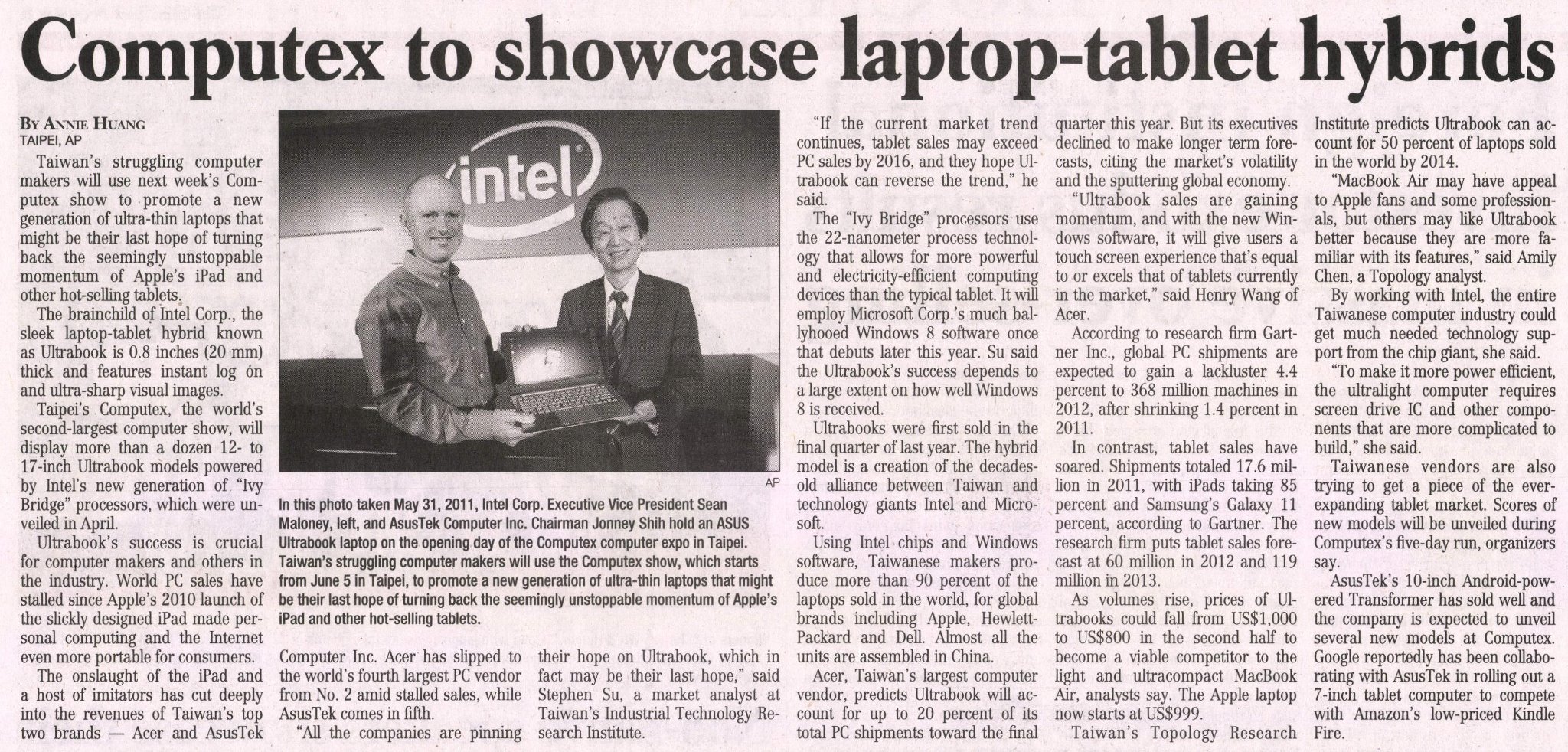 year 2012. ASUS presents on Computex Ultrabook in an attempt to compete with Apple products. Electronic version
year 2012. ASUS presents on Computex Ultrabook in an attempt to compete with Apple products. Electronic versionHowever, since 2012, the PC market and components began to fall. Analysts attribute this to the negative economic situation in the world and the advent of mobile devices. This could not but affect Computex Taipei. The exhibition began to experience difficult times.
“The scale of the exhibition itself is incomparable with the European ones, although the exposition unfolded in three buildings at once. The stands are located on two floors of the Nangang Exhibition Center and on the lower floors of the two buildings next to the famous Taipei 101 tower. However, the total area of Computex 2016 could hardly be compared with at least three halls of MWC 2016 (there are only nine rooms!). And the concentration of well-known brands is incomparable: for example, three of the four Computex halls were filled mainly with local manufacturers and startups, ”
writes Sergey Uvarov, iXBT.com columnist.
Computex is inferior in scale to CES (about our
previous post ). The latter covers almost 20 hectares, and there are enough technical innovations to fill 35 football fields.
Life after pc
In the same 2016, to restore the situation, the organizers of Computex Taipei decided on fundamental changes. The management revised its concept and decided to overshadow the old key topics - personal computers, their components and peripherals. Computex has become an exhibition of information and communication technology with a complete global supply chain.
The following year, Computex Taipei continued the transformation. The organizers tried to uncover the five most relevant topics of the modern high-tech industry - artificial intelligence and robotics, IoT applications, innovations and start-ups, business solutions, as well as Gaming, AR and VR.
 Computex 2017
Computex 2017“Computex 2017 positioning is“ creating a global technological ecosystem, ”in which an international partnership serves as an indispensable driver for the creation and distribution of ICT products and applications,”
said Walter Yeh, President and Chief Executive Officer of the Foreign Trade Development Council of Taiwan.
As a result, more than 1600 companies from around the world presented their latest products and technologies at 5010 stands. Besides Dell, Intel, Microsoft, NVIDIA, Super Micro, Tesla participated in the exhibition for the first time.
Why taiwan
The location of the Computex was not chosen by chance. The information technology industry in Taiwan has played an important role in the global IT market since the 90s of the twentieth century. Among the largest technology companies in Taiwan are Asus, Gigabyte Technology, Quanta Computer, Foxconn and Pegatron.
ASUS introduces the Zenbo robot. Computex 2016“I always think of Taiwan as a producer for Silicon Valley. There are leading companies for the computing business, ”
says Carolina Milanese, vice president of consumer technology at Gartner.
Lee Chang, Deputy Secretary General of the Taipei Computer Association, vividly called Taiwan “Treasure Island” for global ICT innovations. A streamlined supply chain, competent human resources, and a good geographical location in the heart of the rapidly developing region of Southeast Asia do indeed provide this island territory with significant advantages.
According
to Patrick Moorhead, the founder and principal analyst of Moor Insights and Strategy, Computex plays an important role for the business of non-Asian technology companies. “For them, Taiwan is the main route to China, which is considered the fastest growing technology market. The show is visited by a large number of Chinese. In addition, the Chinese media cover everything happening on Computex. And getting Chinese contacts and getting into the Chinese press is worth its weight in the world of technology. ”
Milanezi
believes that if Computex moves, for example, to Las Vegas, the attendance of the exhibition will increase significantly, but its atmosphere will suffer. “Companies such as Asus, HTC and Mediatek have a unique culture that is simply lost abroad,” she notes.
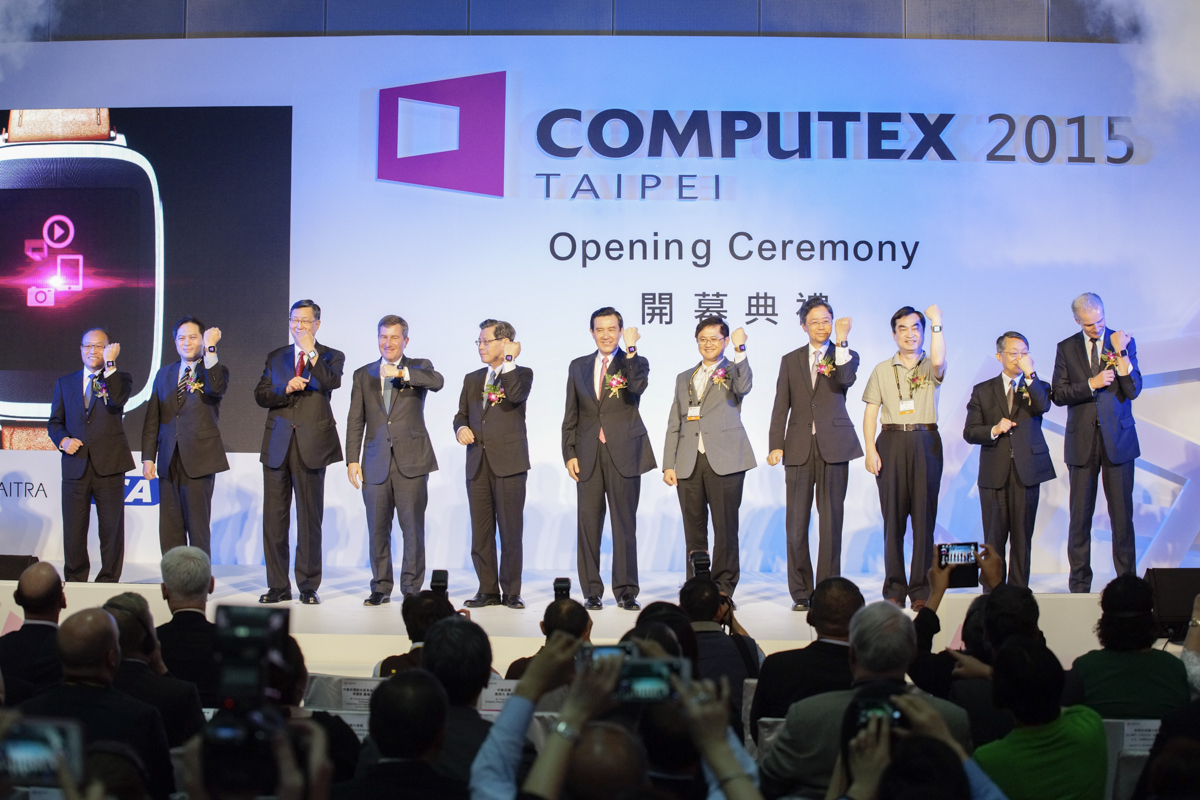 Computex 2015
Computex 2015Computex VS CES
Gadgets made public at CES may be revolutionary, but they are usually prototypes or reference projects that appear on the show. Ultra-high 4K displays, flexible screens for smartphones, vibrating plugs - experimental solutions that show what may appear in the future.
“In a sense, CES is the promise of what can be, and Computex is the fulfillment of this promise,” notes Caroline Milanezi.
For example, at CES 2017, Intel
promised to release a computer small enough to fit in a wallet or purse. And now in the summer at Computex 2017, the corporation
demonstrated the first systems on the Compute Card.
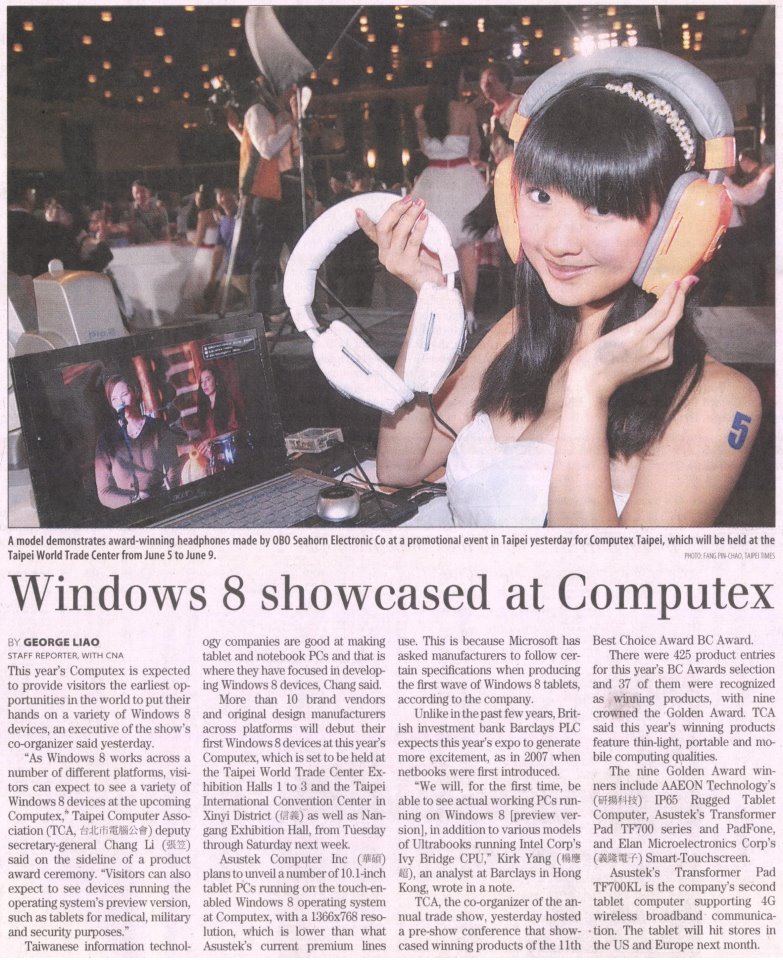 Publication in the Taipei Times for 2012. Electronic version
Publication in the Taipei Times for 2012. Electronic versionAt Computex, promising innovations are not just demonstrated, but the entire supply chain is most fully and comprehensively represented, from microchips and circuit components to complex ready-to-implement solutions.
In 2017, you could see the low-power and heat-dissipating C7-M ULV processors from Via, the MSI P35 Platinum Combo motherboard that supports almost all types of Intel processors, the thinnest ASUS convertible ZenBook Flip S in the world.
Computex is an example of how important it is to adapt to market changes and keep away from competitors. The main thing is to stay interesting for visitors.
Our company adheres to a similar approach to organizing events. Smile-Expo has been holding international conferences, exhibitions and forums for 12 years. Now among the main areas - cryptocurrency and blockchain technology, robotics, gaming industry, eSports, innovations in space and electronic anti-smoking inhalers. For the list of upcoming events, see the
official website .
Finally - a few photos from Computex 2017. Thanks to the expansion of the theme of the exhibition has become much more spectacular.Works participating in the contest for the most original PC caseChairs for gamers with auto coolingWBPA Liveware Bed, which, due to the vibration, makes you lose weight while you are lyingSneakers with "smart" laces that listen to commands from your smartphone